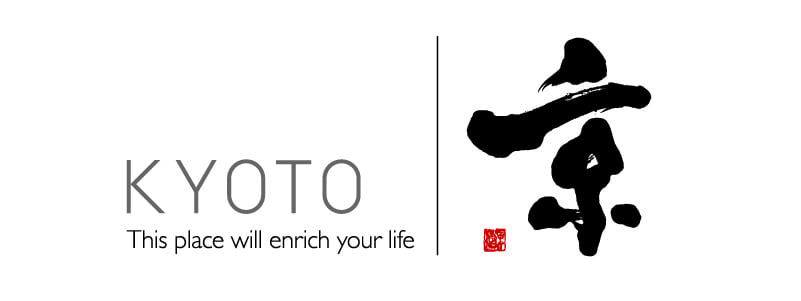Term archive

投稿タイプ:pamphlets
Discover your own KYOTO

投稿タイプ:stay
Matsumoto-tei Ryokan Dining
This long-standing ryokan (traditional inn) with pheasant cuisine has been in business for more than 100 years since its founding in 1890 on Mt. Kasagi, between Kyoto and Nara. Mt. Kasagi is surrounded by historical locations and scenic spots, and Matsumoto-tei offers a family-like hospitality here.
Matsumoto-tei proudly serves its famous, carefully-prepared pheasant dishes, including stone-baked dishes, hot pot, sashimi, and more.

投稿タイプ:sightseeing
Fukujuen Uji Tea Workshop
At this workshop, visitors can experience hand-rolling tea, making Uji tea with a ceramic plate, and using a stone mortar to make matcha tea powder. You can even enjoy activities like making an Asahiyaki pottery bowl, and pottery painting. In the tea room, you can take a class in tea ceremony or sencha tea ceremony. The room can also be used for traditional tea events. Also, in the Fukujuen Tea Room, in addition to Fukujuen's tea, you can eat sweets like matcha ice cream parfaits, tea-flavored foods like ochazuke gozen (a kind of fancy meal made with many small dishes), and all kinds of Uji tea.

投稿タイプ:restaurants
d:matcha Kyoto CAFE & KITCHEN
d:matcha Kyoto CAFE & KITCHEN is a café where you can enjoy food, sweets, and drinks made using tea from the town of Wazuka. Though the ingredients are not limited only to tea, they are as locally-sourced as possible. The unique menu can only be found here, and includes savory food items made with tea, too. In the store, there are sweets made from tea leaves for sale. From the back of the store, you can overlook the beautiful tea fields of Mt. Kamazuka, a view that's perfect for a break from driving or cycling.
In addition to food, there is also a tea field hiking and tea harvesting tour that goes around the spectacular tea plantations.

投稿タイプ:column
Rent a Car and Explore the Southern Part of Kyoto! Go on a One-Day Road Trip Around Kyoto Tea Country!

投稿タイプ:column
Discover Unique Sake Breweries Across Kyoto
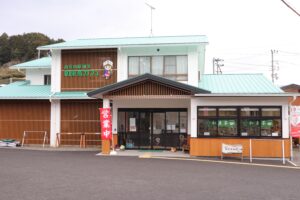
投稿タイプ:restaurants
Wazukacha Cafe
In the center of town visitors will find the Wazaukacha Cafe, near the Wazuka Yamanoie bus stop. This facility doubles as an inviting cafe and a visitors center, providing sightseeing maps and information for travelers. They also have a shop selling local goods and over four hundred tea items. This is a great spot to pick up some single origin Wazuka tea, allowing you to savor the rich taste of an individual farm instead of a typical mass-produced blend from multiple fields. Rental bikes are available for 1,100 yen per day. Breezing through the hillside scenery is enjoyable in any season.
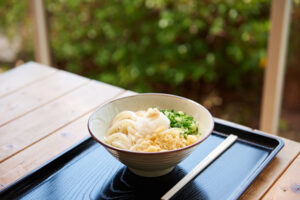
投稿タイプ:restaurants
Tanaka-ya Udon: Ide-cho Main Shop
While this is a casual udon restaurant that runs on a self-service basis, the amazing quality of its dishes is evident as soon as you take a bite. The chewy and springy noodles and the deep and flavorful soup stock are so delicious that you will eat them right up.
Here, the udon noodles are made from 9 pm to 1 am, when the temperature is the most stable. For the soup stock, which the restaurant begins brewing at 6 am, four types of dried and fermented fish and Risiri kelp are used, and dried bonito shavings are added for flavor. The water that is essential for both the udon and soup stock is soft acidic water that is produced through many processes.
The most popular Bukkake Udon, the Kasu Udon that is rare in Kyoto, and the Saikyo Udon that is characteristic of Kyoto are highly recommended here.
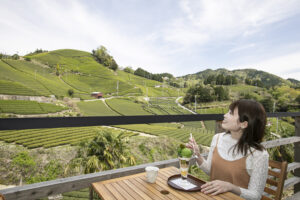
投稿タイプ:restaurants
dan dan cafë
This is a cafe where you can enjoy the view of Wazuka-cho’s most famous "Ishitera Tea Fields."
In order to enjoy this view at a leisurely pace, this cafe was opened by a woman who worked in the restaurant business and her younger brother who is a town resident and the owner of the land.
At the cafe, the menu includes handmade lunches prepared one by one, curry, omelet with rice, Wazuka tea, gelato made with seasonal fruits (can be purchased for takeout), and parfait.
* For lunches, ordering in advance is recommended.

投稿タイプ:sightseeing
Asahiyaki Pottery
The pottery that is an Uji original comes from the Asahiyaki establishment on the eastern bank of the Uji River. For over four hundred years and sixteen generations. Entering the Asahiyaki gallery is a step into a world of refinement and elegance. Each of the pieces here has passed through the white-hot fire of the kilns in the Asahiyaki factory nearby. Works by the current master potter are for sale - priced for serious collectors - but a variety of affordable options are on display as well. For a more in-depth look at the Asahiyaki process, enter the factory itself and take part in a pottery class taught by a craftsman.
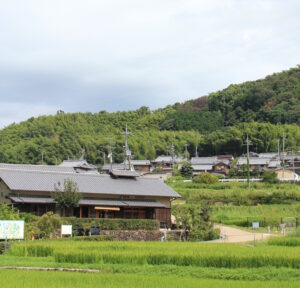
投稿タイプ:sightseeing
Ide Machizukuri Center Tsubakizaka
This is a place for relaxation and refreshment along Yamashiro Kodo. Commonly known as "Tsubaki-zaka," this exchange hub of Ide-cho has a porch and a sunken fireplace, and is a space where you can spend some time in peace.
Nearby, there are also the Jizozen-in Temple and Ono no Komachi Zuka, where the cherry blossoms are magnificent. Many people travel to and from this place as a resting area when hiking on Yamashiro Kodo, and fond times are spent here.
Various pamphlets, maps of Yamashiro Kodo are also available.
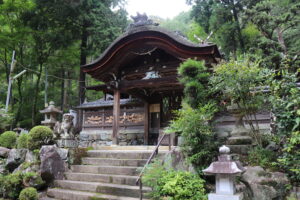
投稿タイプ:sightseeing
Tamatsuoka Shrine
This shrine was reportedly built as a clan temple by Tachibana no Moroe in 731.
The precinct covered with overgrown trees is filled with cool air even on midsummer days, which creates a dark green shade.
The main hall of the shrine has a Kasuga-zukuri style and was rebuilt in 1687. In the precinct, there is the Tachibana Shrine, which is dedicated to Tachibana no Masashige, a descendent of Tachibana no Moroe.
In the adjacent Jizozenin Temple, there is a weeping cherry tree that is selected as one of the ten famous trees and a natural monument of the prefecture.
